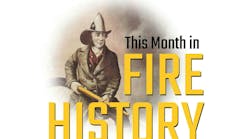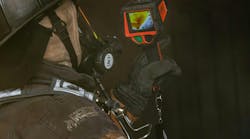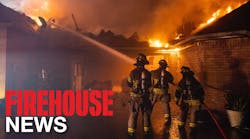FORT LEWIS, Wash. (AP) -- A small group of Washington National Guard members dug a fire line and learned to mix fire retardant foam as they trained at this Army post south of Seattle for what many fear could be a long and difficult wildfire season.
The field activities Thursday were part of a five-day training this week, scheduled in response to Gov. Christine Gregoire's request this year that the National Guard be trained prior to being activated for deployment to a wildfire. Gregoire in March declared a drought emergency in the state.
It's the first time the state Guard will certify 15 Army and Air National Guard members for wildland firefighting so they can then train roughly 100 more of their peers in basic firefighting skills.
''When and if we do get the call to get mobilized for a forest fire or a wildland fire, then we're already ahead of the ball,'' said Lt. Jefferson Mason, a coordinator with the National Guard's Joint Operations Center at Camp Murray, which oversees emergency deployments of the Army and Air National Guard.
Mason said the course costs about $9,000. It's taught by two contracted firefighting instructors and includes training support from the state Department of Natural Resources.
If additional soldiers are needed on the fire lines this year, National Guard officials have identified two, 250-member crews to be trained by DNR, likely at the Yakima Training Center in Eastern Washington.
In the past, basic firefighting skills have been taught by Natural Resources' employees or contractors. But it's usually done in response to a fire, rather than before one, and has required pulling vital human resources from the fire lines, said Joel Rogauskas, Natural Resources' interagency fire training program manager in Olympia.
When responding to wildfires, DNR normally relies first on its own employees, seasonal firefighters and contract crews, as well as inmates from the Corrections Department.
The National Guard is brought in only as a last resort, and in the past has normally served only the support role of preparing camps and transporting firefighters.
Thursday's training is what traditional wildland firefighters would receive, Rogauskas said. It included digging fire lines and learning to use hand tools such as shovels and pulaskies, hybrid versions of a shovel and a hoe. Soldiers were also trained to use basic firing devices ''to fight fire with fire,'' he said, most commonly a drip torch and fusees, which look like a standard road flare.
This week's training gives the soldiers the necessary background to then train their peers for Level 1 support: setting up base camps; transporting supplies and personnel to fire lines; and communications.
After watching instructor Larry Scott demonstrate how to use a fusee to backburn a small patch of dry grass, soldiers trekked a few yards down a gravel road to begin digging a fire line among the towering pine trees and thick overgrowth of scotch broom.
''Bump! When I say 'Bump!'', that means you move up,'' shouts Mike Gouette, who has 40-plus years of firefighting experience and is a retired fire management officer with the U.S. Forest Service. Like Scott, he's now a contractor with Incident Management Services and Training in Edmonds. ''Loud! You gotta be loud, gotta be heard over the fire folks!''
Soldiers hacked and shoveled an 8-inch swath through the undergrowth, snaking their way through brush, cutting back foliage and unearthing the dark, moist soil beneath to deprive an oncoming fire of any fuel resources. Reminding them to stay equal distances _ about 10 feet apart _ Gouette bellows, ''It looks like kind of an articulated centipede when we get going.''
Sgt. Tiffanie Eilers, a heavy equipment operator with the 254th RED HORSE Squadron, volunteered for the course for the experience.
''It's something that a lot of people don't take the time to think about. Then in a time of need, where do you get your people from? When I was given the opportunity to be a part of this I jumped at it,'' said Eilers, 27, of Orting.
Wearing green camouflage fatigues, black leather boots, a yellow hard hat and a pair of pearl earrings, the married mother of two was the only woman among the 15 soldiers trained. Like the others, she recognizes the danger that comes with the task, but said it's just part of the job.
''There's definitely some adrenaline involved, but I think in any goodhearted, good-natured person, what really drives you is to help and make a difference,'' she said.





